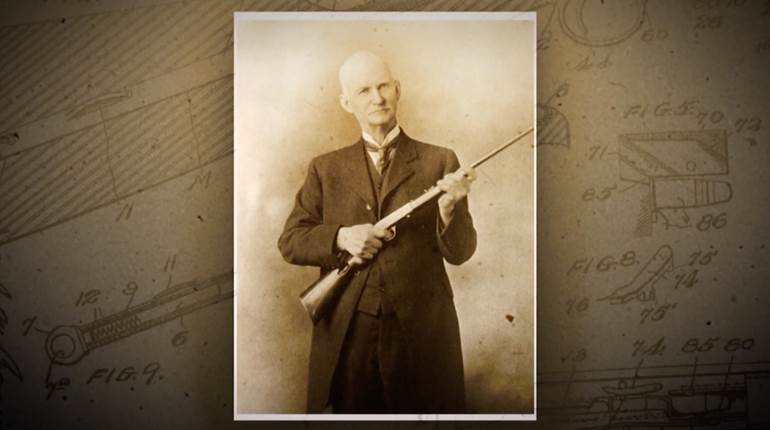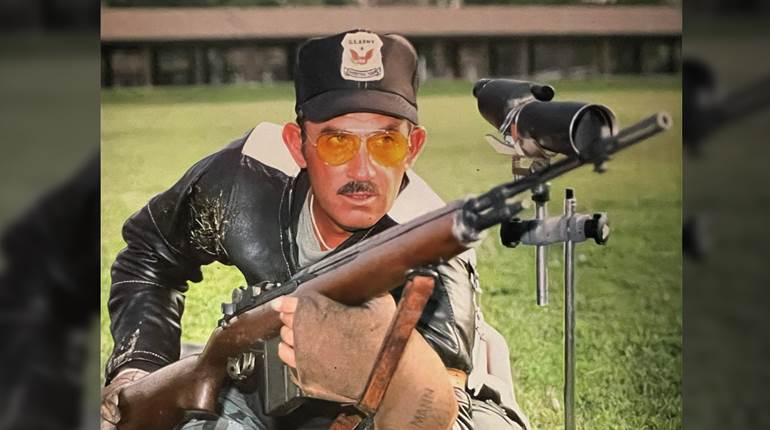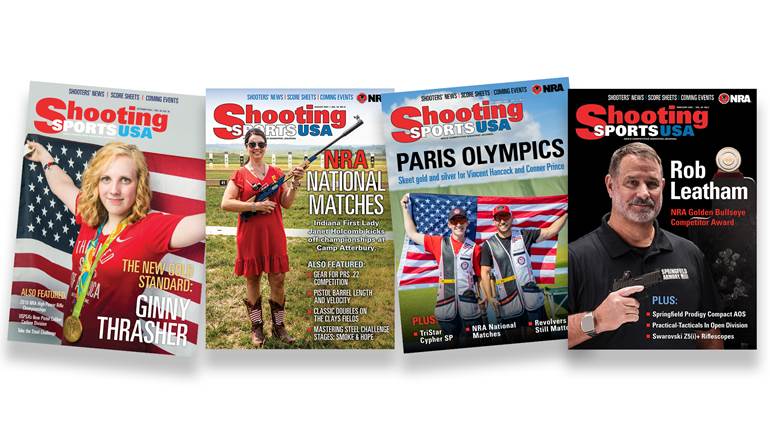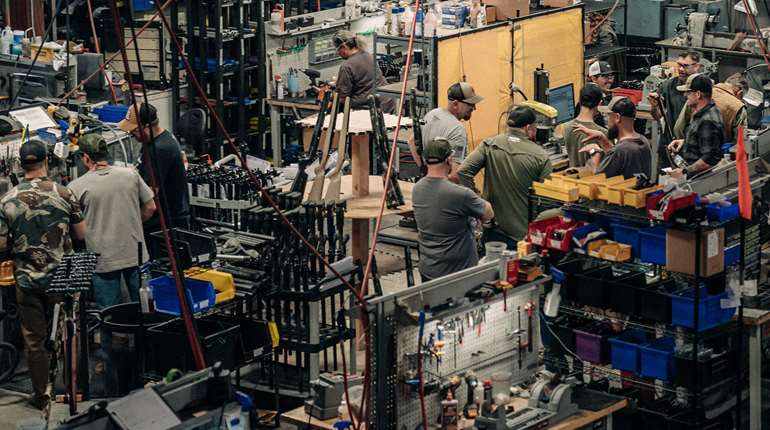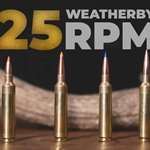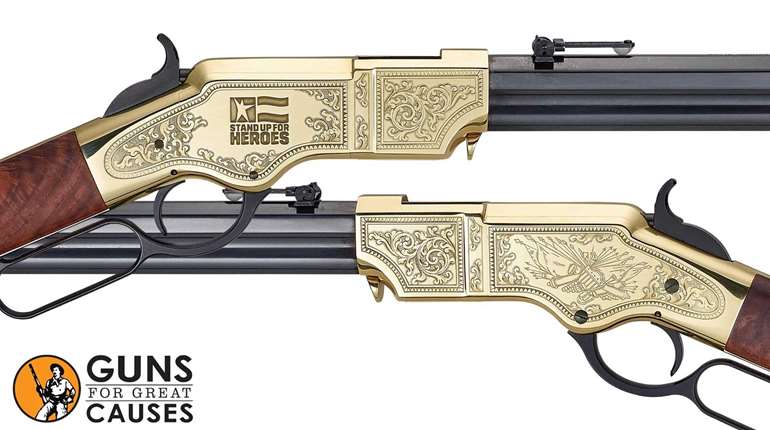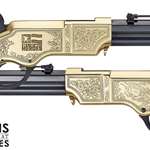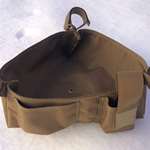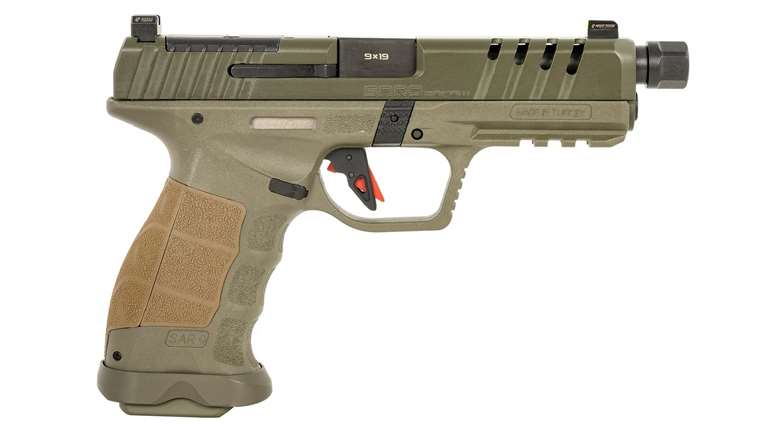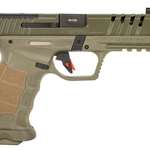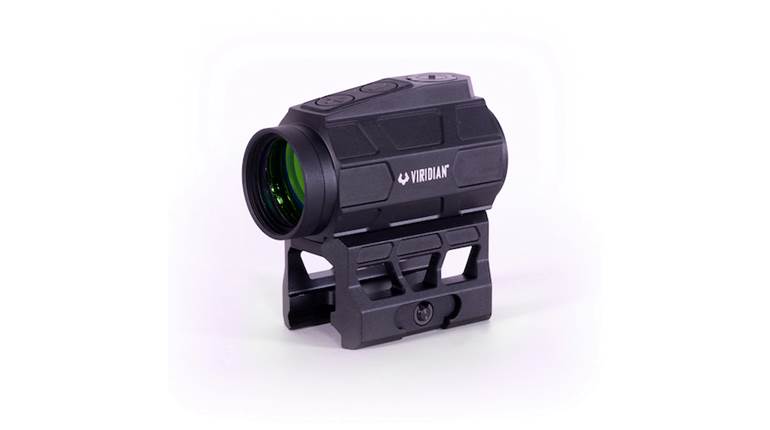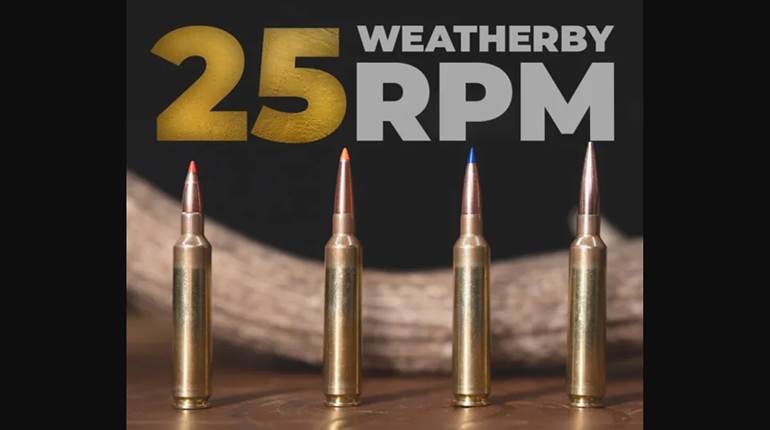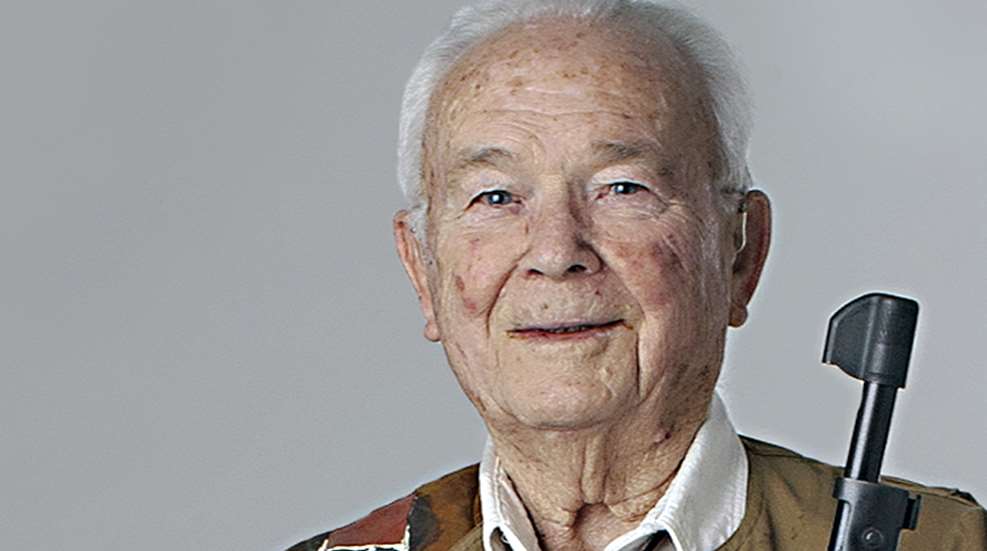
The late Bill Jordan and I used to catch up at the SHOT Show. We would stand in the aisle, right where we happened to meet, and talk (rather loudly, I recall) about the past year’s events. I remember one year, well more than a decade ago, when Bill was in the middle of some hunting story when he stopped talking and abruptly changed the subject. “You know, Bill, folks have sometimes called me a hero just because I wrote a book and some magazine articles and arrested a few folks who needed it. But do you know who my hero is?” I replied, “Who’s that, Bill?” He smiled and nodded over my shoulder and said, “That short, mean S.O.B. coming up behind you.” I turned around to greet Col. Walter R. Walsh.
At Walsh’s 100th birthday party, his family served three cakes: One had the seal of the Federal Bureau of Investigation; the second, the seal of the United States Marine Corps; and the third bore five Olympic rings. Each represented a major achievement in Walsh’s life, and each could make a major story. For one man to be presented all three indicates just how special that person is.
Walsh, born in New Jersey in 1907, had an early appreciation for firearms, and he enjoyed shooting a neighbor boy’s smoothbore .22 at rats in the city dump where the Meadowlands is now. His father gave him his first rifle, a .22-cal. Mossberg, when he was about 12. He was serious enough about marksmanship by then that the rifle was shortly traded for a Remington Model 12. His first match rifle, acquired later, was a Winchester Model 52. The rest, as they say, is history.
Lying about his age (which was then 16), Walsh joined the Civilian Military Training Corps (CMTC) and received his first formal marksmanship training with a 1903 Springfield. In 1928 he joined the New Jersey National Guard, made its rifle team and attended the National Matches at Camp Perry, Ohio, that same year. Two years later, he shot in the Sea Girt Interstate Tournament and won both the rifle and pistol championships as well as the Governor’s Trophy for shooting the 1,200 yd. long-range service rifle championship with a perfect score, using iron sights. In 1932, Walsh won the Smallbore Wimbledon and American Legion Championships. A May 1932, American Rifleman advertisement for Western Cartridge Co. shows a very young-looking Walsh after winning the Leech Cup Match. In 1935 he became Double Distinguished. His achievements in both rifle and pistol shooting were to continue for more than six decades.
In 1934, fresh out of law school, Walsh joined the FBI in the first agent class to be armed, in his case with a Colt Official Police revolver in .38 Spl. His first assignment was in St. Paul, Minn., covering four states. After a short period he was transferred to the Milwaukee office.
Since many of the FBI agents then had little firearm experience, Director Hoover tended to call on his more experienced shooters for “heavy” arrests. Investigative work on the Bremer kidnapping case in St. Paul and Milwaukee led to the FBI’s interest in the Barker gang. The FBI learned that Doc Barker was in Chicago, so Walsh wound up there on special assignment. The Bureau didn’t have restrictions on personally owned guns, and Walsh acquired a pair of registered .357 Magnums (purchased through Frank Baughman, an FBI firearms instructor and designer of the famous S&W front sight) and a “tuned-up” Colt .45 ACP Government Model. They would come in more than handy. In November 1934, he and another agent found Baby Face Nelson’s body dumped in a roadside ditch after Nelson, a.k.a. Lester Gillis, died of his wounds in a previous shoot-out with FBI agents in rural Illinois.
On Jan. 8, 1935, Walsh and a team of agents were checking on a possible address for Doc Barker’s girlfriend. He and fellow agent Bill Smith spotted the girlfriend with a companion. It was him. Walsh bailed out of the 1935 Hudson (equipped with a one-way radio) and followed Barker, who tried to walk away. Walsh moved up behind him. Doc started to run but slipped on some mud and ice, and fell. Walsh stuck his .45 in Doc’s ear and declared, “Don’t move, Doc, or I’ll kill you.” Walsh had no handcuffs, but Smith arrived immediately with his. When Barker was searched, it was found he had no gun. When Barker complained that he had left it upstairs and “wasn’t that a hell of a place for it,” Walter told him, “No Doc, you were lucky.” Barker also complained about being arrested by a “damn baby-faced kid.” A search of his apartment revealed clues that resulted in locating Ma Barker in Florida. She and her son, Fred, were killed in a subsequent shootout there.
If the arrest of Barker wasn’t enough for one day, Walter found himself on another raid that same afternoon. Gangster Rusty Gibson and other gang members were located, and Gibson decided he wouldn’t give up. He put on a “bullet proof” vest and armed himself with a stolen Browning Automatic Rifle. Trying to escape out the back, he encountered Walsh, armed with a .351 Winchester Self-Loading rifle. As Walsh described it to me, “He shot high. I didn’t.”
In October 1937, Walsh found himself in Bangor, Maine. The Brady Gang had been reported in the area attempting to buy a Thompson submachine gun. The gang members were wanted for numerous robberies and murders, including that of an Indiana state trooper. Again, the FBI’s “heavy squad” was called. Walsh posed as a salesman in the sporting goods store where the sale was supposed to go down. He was armed with his .45 pistol and one of the .357 Registered Magnums. The gang was spotted in the area, and then-gang member James Dalhover entered the store. He was immediately arrested by Walsh and taken to the back of the store by other agents. Dalhover, after some prompting, answered the question posed to him by Walsh with, “My pals are right outside.” As Walsh approached the plate-glass front door and put his left hand on the door handle, he realized he was looking through the glass at gang member Clarence Shaffer. The two men fired almost simultaneously. The front door glass exploded, and Walsh was hit twice; once in the chest into his lung and once in his right hand, in which he held the .45. The bullet that hit his thumb also hit the pistol’s stock and magazine. Walter threw down the now useless pistol and, with the .357 in his left hand, fired through the front door. He put Shaffer down with fatal hits and went outside. Gang leader Al Brady had already been hit by agents as he got out of his car but started shooting and was still moving as Walter put another shot into him.
Decades later, I acquired a set of photographs from the Bangor Police Dept. taken immediately after the shooting. I dropped them on Walter’s lap without comment. He looked at them intently, one by one, until he came to one of a body on its back on the street. “That guy’s name is Shaffer,” he said. “I killed that S.O.B.”
In spite of his FBI schedule, Walter was able to continue his competitive shooting. He joined the U.S. Marine Corps Reserve in 1938 as a second lieutenant and represented its team, as well as the FBI, during the pre-war period. In 1940 he won the DuPont trophy as the best all-round shot in High Power, Long Range and Service Rifle, Centerfire Pistol and Smallbore Rifle. His was a record score that still stands today.
In 1942, Walsh went on active duty with the Marines. It was a soul-searching decision as the FBI needed agents, but he believed his duty was to the Corps. Because of his shooting experience, he was called on to organize and train the Marine Scout Snipers at New River, N.C. There was virtually no written record of the Marine sniper program in World War I, and he had to use a copy of McBride’s “A Rifleman Went To War” as his only reference—that, of course, and his by-then extensive shooting experience.
By 1944, he was tired of stateside duty and requested a combat assignment. He was afraid he would miss the war. He was transferred to the 1st Marine Division for the invasion of Okinawa. As a staff officer, he could have stayed behind the lines, but that was not his way. He was often found in the thick of combat. On one occasion, he shot a Japanese sniper at 80 yards with one shot from his .45 automatic. On another, he was with a Marine patrol when a firefight started. As the young Marines were firing back, they heard the steady blast of a .45 in “perfect timed fire,” an enemy soldier down with each shot. Fifty plus years later I asked Walter about this incident. After a thoughtful pause, he replied, “It wasn’t timed fire.”
After the war ended, Walter was assigned to the occupation of North China, protecting the railroads and supplies from bandits. He left active duty in 1946 and returned to a rather chilly reception in the FBI. After about a year, he returned to active duty with the Marine Corps and later commanded the 1st Battalion, 8th Marines.
Walter’s competition continued, very successfully, in fact. He won the Marine Corps Pistol Championship in 1946 and the Eastern Division Rifle Championships in 1947. The following year, he won both the rifle and pistol championships and shot on the U. S. Olympic team. He won countless other awards, including the gold medal as a member of the winning Center-Fire Pistol team in the World Championships. He became the commanding officer of Weapons Training Battalion, Quantico, in 1962 and continued in that assignment until his retirement in 1969. He received the International Distinguished Medal in 1964, making him Triple Distinguished, the first Marine to do so. The top Marine Corps Pistol Trophy is named after him.
Competition continued after his retirement, including service as team captain of the U.S. Int’l Muzzle Loading team at the World Championships in Switzerland in 1994. He also served on the NRA Board of Directors and with several committees. In 1997, Walter Walsh received the Outstanding American Handgunner Award. A proud Bill Jordan made the presentation.
A week after his 100th birthday, I met with Walsh and his grandson Chip at our local gun club. Chip and I shot a couple rounds of skeet, with Walter watching from the sidelines. Finally, Walter couldn’t stand it any longer and dropped down off the tailgate where he was sitting and took the 20 gauge from Chip, and proceeded to hit 10 of 15 birds.
Colonel Walter Walsh is now 103. He still lives in Northern Virginia. He is a very humble individual and at a recent lunch together, I described him as “a fugitive from the law of averages.” He considered this and finally replied, “Yes, I guess I am at that.”
Editor's Note: Walter R. Walsh passed away on April 29, 2014 at the age of 106, more than three and a half years after this article was published.












